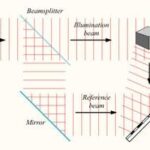What is an irrational number? This question often arises when exploring number systems. WHAT.EDU.VN provides clear answers, exploring irrational numbers definition, characteristics, and examples. Discover how they differ from rational numbers and where they appear in mathematics. Let’s explore non-repeating decimals, non-terminating decimals and real numbers.
Table of Contents:
1. Understanding Irrational Numbers
2. Defining Irrational Numbers
3. Examples of Irrational Numbers
4. Identifying Irrational Numbers
5. The Irrationality of Pi (π)
6. The Symbol for Irrational Numbers
7. Key Properties of Irrational Numbers
8. A List of Common Irrational Numbers
9. Irrational Numbers as Real Numbers
10. Sum and Product of Irrational Numbers
- 10.1. Product of Two Irrational Numbers
- 10.2. Sum of Two Irrational Numbers
11. Irrational Number Theorem and Its Proof
12. Finding Irrational Numbers
13. Solved Examples Involving Irrational Numbers
14. Frequently Asked Questions (FAQs) on Irrational Numbers
1. Understanding Irrational Numbers
Irrational numbers are a fascinating category within the realm of mathematics. They represent real numbers that cannot be expressed as a simple fraction or ratio of two integers. These numbers possess unique properties, making them distinct from rational numbers. Unlike rational numbers, irrational numbers have decimal representations that neither terminate nor repeat. Understanding what makes a number irrational is crucial in various mathematical contexts, from basic arithmetic to advanced calculus.
2. Defining Irrational Numbers
An irrational number is formally defined as a real number that cannot be written in the form p/q, where p and q are integers and q is not equal to zero. This definition sets them apart from rational numbers, which can be expressed as such a fraction. The decimal representation of an irrational number is non-terminating and non-repeating. This means the digits after the decimal point go on infinitely without forming a recurring pattern. For instance, the square root of 2 (√2) is approximately 1.41421356… and continues endlessly without any repetition of digits. This characteristic is a hallmark of irrational numbers.
3. Examples of Irrational Numbers
Several well-known numbers fall into the category of irrational numbers. The most common examples include:
- Pi (π): The ratio of a circle’s circumference to its diameter, approximately 3.14159265358979…, is an irrational number. Its decimal representation goes on infinitely without repeating.
- Square Root of 2 (√2): As mentioned earlier, √2 ≈ 1.41421356… is a classic example of an irrational number.
- Square Root of 3 (√3): √3 ≈ 1.7320508… also has a non-terminating, non-repeating decimal representation.
- Euler’s Number (e): The base of the natural logarithm, e ≈ 2.71828182845904…, is another fundamental irrational number.
- Golden Ratio (φ): The golden ratio, often denoted by the Greek letter phi (φ), is approximately 1.61803398874989…. It appears in various areas of mathematics, art, and architecture.
These examples illustrate the diversity of irrational numbers and their presence in various mathematical and scientific contexts.
4. Identifying Irrational Numbers
Determining whether a number is irrational involves checking if it can be expressed as a fraction of two integers. If a number’s decimal representation is non-terminating and non-repeating, it is highly likely to be irrational. However, this is not always straightforward.
A simple rule is that the square root of any non-perfect square integer is irrational. For example, √5, √6, √7, √8, √10, √11, and so on are all irrational because 5, 6, 7, 8, 10, and 11 are not perfect squares. Conversely, √4 = 2, √9 = 3, and √16 = 4 are rational because 4, 9, and 16 are perfect squares.
Similarly, cube roots of non-perfect cubes are irrational. For instance, the cube root of 2 (∛2) is irrational because 2 is not a perfect cube.
5. The Irrationality of Pi (π)
Pi (π) holds a special place in mathematics and is one of the most well-known irrational numbers. It is defined as the ratio of a circle’s circumference to its diameter. The decimal representation of π begins as 3.14159265358979… and continues infinitely without any repeating pattern.
The irrationality of π has been proven mathematically, demonstrating that it cannot be expressed as a fraction p/q, where p and q are integers. This proof involves advanced mathematical concepts and is a significant result in number theory. Due to its irrationality, π appears in numerous formulas and calculations in geometry, trigonometry, and calculus.
6. The Symbol for Irrational Numbers
Unlike rational numbers, which are often denoted by the symbol Q, there isn’t a universally accepted single symbol for irrational numbers. However, they are commonly represented using set notation. Since irrational numbers are real numbers (denoted by R) that are not rational numbers, they are often expressed as the set difference:
- R Q or R – Q
This notation signifies the set of real numbers minus the set of rational numbers, which leaves only the irrational numbers. Sometimes, the symbol P is used to represent irrational numbers, especially in contexts where distinguishing them from rational numbers is essential.
7. Key Properties of Irrational Numbers
Irrational numbers possess several important properties that distinguish them from rational numbers:
- Non-Terminating and Non-Repeating Decimals: As mentioned earlier, their decimal representations go on infinitely without repeating.
- Addition with Rational Numbers: The sum of an irrational number and a rational number is always irrational. For example, if x is irrational and y is rational, then x + y is irrational.
- Multiplication with Non-Zero Rational Numbers: The product of an irrational number and a non-zero rational number is always irrational. If x is irrational and y is a non-zero rational number, then x y is irrational.
- Closure under Multiplication: The set of irrational numbers is not closed under multiplication. This means that the product of two irrational numbers can be either rational or irrational. For instance, √2 √2 = 2 (rational), but √2 √3 = √6 (irrational).
- Closure under Addition: Similar to multiplication, the set of irrational numbers is not closed under addition. The sum of two irrational numbers can be rational or irrational. For example, (3 + √2) + (3 – √2) = 6 (rational), but √2 + √3 is irrational.
- Density: Between any two real numbers, there are infinitely many irrational numbers. This property demonstrates the density of irrational numbers on the real number line.
These properties highlight the unique nature of irrational numbers and their interactions with rational numbers.
8. A List of Common Irrational Numbers
To further illustrate the concept, here is a list of some common irrational numbers along with their approximate values:
| Irrational Number | Approximate Value |
|---|---|
| Pi (π) | 3.14159265358979… |
| Euler’s Number (e) | 2.71828182845904… |
| Golden Ratio (φ) | 1.61803398874989… |
| Square Root of 2 (√2) | 1.41421356237309… |
| Square Root of 3 (√3) | 1.73205080756887… |
| Square Root of 5 (√5) | 2.23606797749979… |
| Cube Root of 2 (∛2) | 1.25992104989487… |


These numbers frequently appear in various mathematical and scientific contexts and serve as excellent examples of irrationality.
9. Irrational Numbers as Real Numbers
In the broader context of mathematics, all irrational numbers are considered real numbers. Real numbers encompass both rational and irrational numbers and can be represented on the number line. This means that every irrational number corresponds to a unique point on the number line.
Irrational numbers are not complex numbers because they do not have an imaginary component. Complex numbers are of the form a + bi, where a and b are real numbers and i is the imaginary unit (√-1). Irrational numbers, being purely real, do not fall into this category.
10. Sum and Product of Irrational Numbers
The sum and product of two irrational numbers can be either rational or irrational, depending on the specific numbers involved.
10.1. Product of Two Irrational Numbers
The product of two irrational numbers can result in either a rational or an irrational number.
-
Example 1: Product is Rational
√2 is an irrational number. When √2 is multiplied by itself, the result is 2, which is a rational number.
√2 * √2 = 2
-
Example 2: Product is Irrational
π is an irrational number. When π is multiplied by itself, the result is π², which is also an irrational number.
π * π = π²
This variability shows that the set of irrational numbers is not closed under multiplication.
10.2. Sum of Two Irrational Numbers
Similarly, the sum of two irrational numbers can be either rational or irrational.
-
Example 1: Sum is Irrational
If we add two irrational numbers, such as √2 and √3, the sum is an irrational number.
√2 + √3 = approximately 1.414 + 1.732 = 3.146 (irrational)
-
Example 2: Sum is Rational
Consider the irrational numbers (3 + √2) and (3 – √2). When added together, the sum is 6, which is a rational number.
(3 + √2) + (3 – √2) = 3 + √2 + 3 – √2 = 6
This variability indicates that the set of irrational numbers is not closed under addition.
11. Irrational Number Theorem and Its Proof
An important theorem related to irrational numbers is used to prove that certain numbers are irrational.
Theorem: If p is a prime number and a² is divisible by p (where a is any positive integer), then p also divides a.
Proof:
Using the Fundamental Theorem of Arithmetic, any positive integer a can be expressed as the product of its prime factors:
a = p₁ p₂ p₃ … pₙ
where p₁, p₂, p₃, …, pₙ are all the prime factors of a.
Squaring both sides of the equation, we get:
a² = (p₁ p₂ p₃ … pₙ) (p₁ p₂ p₃ … pₙ)
a² = p₁² p₂² p₃² … pₙ²
According to the Fundamental Theorem of Arithmetic, the prime factorization of a natural number is unique, except for the order of its factors.
If p is a prime number and a factor of a², then p must be one of p₁, p₂, p₃, …, pₙ. Therefore, p is also a factor of a.
Hence, if a² is divisible by p, then p also divides a.
This theorem is used to prove that √2 is irrational.
Proof that √2 is Irrational:
-
Assume, for the sake of contradiction, that √2 is rational.
-
Then, by definition, √2 can be written as p/q, where p and q are co-prime integers and q ≠ 0 (co-prime integers have no common factors other than 1).
-
Squaring both sides, we get:
2 = p²/q²
p² = 2q²
-
From the theorem above, if 2 is a prime factor of p², then 2 is also a prime factor of p.
-
So, we can write p = 2c, where c is an integer.
-
Substituting this value of p back into the equation p² = 2q², we get:
(2c)² = 2q²
4c² = 2q²
q² = 2c²
-
This implies that 2 is a prime factor of q² as well. Again, from the theorem, 2 is also a prime factor of q.
-
According to our initial assumption, p and q are co-primes, but the result above contradicts this assumption because p and q have 2 as a common prime factor other than 1.
-
This contradiction arose due to the incorrect assumption that √2 is rational.
Therefore, √2 is irrational.
Similarly, this method can be used to prove that the square root of any prime number is irrational.
12. Finding Irrational Numbers
Finding irrational numbers between two given numbers involves identifying numbers that cannot be expressed as fractions and have non-terminating, non-repeating decimal representations.
Example:
Find irrational numbers between 2 and 3.
We know that √4 = 2 and √9 = 3. Therefore, any square root of a non-perfect square between 4 and 9 will be irrational. The irrational numbers between 2 and 3 include:
- √5
- √6
- √7
- √8
These numbers are irrational because 5, 6, 7, and 8 are not perfect squares and their square roots cannot be simplified to rational numbers.
Another Approach:
Consider finding an irrational number related to √2. Suppose we want to show that √2 is irrational.
Assume that √2 is a rational number. Then, by the definition of rational numbers, it can be written as:
√2 = p/q
Where p and q are co-prime integers and q ≠ 0.
Squaring both sides of the equation, we have:
2 = p²/q²
p² = 2q²
From the theorem stated above, if 2 is a prime factor of p², then 2 is also a prime factor of p.
So, p = 2 c, where c* is an integer.
Substituting this value of p in the equation p² = 2q², we have:
(2c)² = 2q²
4c² = 2q²
q² = 2c²
This implies that 2 is a prime factor of q² also. Again, from the theorem, it can be said that 2 is also a prime factor of q.
According to the initial assumption, p and q are co-primes, but the result obtained above contradicts this assumption as p and q have 2 as a common prime factor other than 1. This contradiction arose due to the incorrect assumption that √2 is rational.
Therefore, √2 is irrational.
13. Solved Examples Involving Irrational Numbers
Question 1: Identify which of the following numbers are rational or irrational:
2, -0.45678…, 6.5, √3, √2
Solution:
- Rational Numbers: 2, 6.5 (because they have terminating decimals).
- Irrational Numbers: -0.45678… (non-terminating, non-repeating decimal), √3, √2 (square roots of non-perfect squares).
Question 2: Determine if the following numbers are rational or irrational:
2, 5/11, -5.12, 0.31
Solution:
Since the decimal expansion of a rational number either terminates or repeats, all the given numbers are rational:
- 2 (can be written as 2/1)
- 5/11 (a fraction of two integers)
- -5.12 (terminating decimal)
- 0.31 (terminating decimal)
Do you have more questions about rational and irrational numbers? Visit WHAT.EDU.VN for free answers and expert insights. Our community of experts is ready to help you understand complex mathematical concepts with ease.
14. Frequently Asked Questions (FAQs) on Irrational Numbers
Q1: What is an irrational number? Give an example.
An irrational number is a real number that cannot be represented as a simple fraction. It cannot be expressed in the form of a ratio p/q, where p and q are integers and q ≠ 0. Examples include √2, √3, √5, √11, √21, and π (Pi).
Q2: Are integers irrational numbers?
No, integers are rational numbers but not irrational. All integers, whether positive, negative, or zero, can be written in the form of p/q. For example, 2, 3, and 5 are rational numbers because they can be represented as 2/1, 3/1, and 5/1.
Q3: Is an irrational number a real number?
Yes, an irrational number is a real number and not a complex number because it is possible to represent these numbers on the real number line.
Q4: What are five examples of irrational numbers?
There are many irrational numbers that cannot be written in simplified form. Some examples are:
- √8
- √11
- √50
- Euler’s Number (e ≈ 2.718281)
- Golden Ratio (φ ≈ 1.618034)
Q5: What are the main irrational numbers?
The most common irrational numbers are:
- Pi (π) ≈ 3.14159265358979…
- Euler’s Number (e) ≈ 2.71828182845904…
- Golden Ratio (φ) ≈ 1.61803398874989…
- Square Roots (√2, √3, √5, √7, √8, and any number under the root that cannot be simplified further).
Do you find math confusing? At WHAT.EDU.VN, we provide clear, free answers to all your questions. Don’t struggle alone – connect with our community and get the help you need today!
Are you struggling to understand irrational numbers or any other math concepts? Do you need quick, reliable answers without the hassle of searching endlessly? Visit WHAT.EDU.VN today! Our platform offers free, expert-provided answers to all your questions. Whether you’re a student, a professional, or just curious, we’re here to help.
Why choose WHAT.EDU.VN?
- Free Access: Ask any question and get answers without any cost.
- Quick Responses: Get timely and accurate information.
- Expert Answers: Benefit from the knowledge of experienced professionals.
- Easy to Use: Our platform is designed for simplicity and ease of navigation.
- Community Support: Connect with others and share knowledge.
Don’t let your questions go unanswered. Join WHAT.EDU.VN now and experience the convenience of free, reliable knowledge at your fingertips.
Contact us:
Address: 888 Question City Plaza, Seattle, WA 98101, United States
WhatsApp: +1 (206) 555-7890
Website: WHAT.EDU.VN
Get the answers you need today – visit what.edu.vn and ask away!
